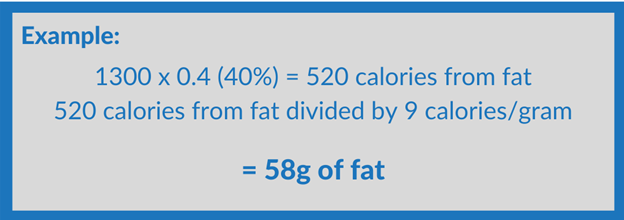This article will introduce you to the basics of macro counting for fat loss and explain the nutrition hierarchy.
Macro Counting for Fat Loss: The Basics
This article will introduce you to the basics of macro counting for fat loss and explain the nutrition hierarchy.
Creating a Calorie Deficit with Macro Counting
In last week’s blog post, we established that dieting isn’t going to work if you’re looking for a sustainable, long-term fat loss. But what options do you have to meet your nutrition goals and create lasting changes in your health?
We need to get rid of quick fixes, “magic pills”, and restrictive meal plans. Instead, we want to implement tools that will help you to create more satisfying meals and have greater freedom in your diet.
Macro tracking is one tool that can help you to develop awareness around how to meet your body’s needs, while eating flexibly without guilt.
This strategy considers how foods fit into the bigger picture of your diet. It focuses on fueling your body in a way that shows it care and love, rather than starving yourself.
Before we get into the process of determining the macros that are right for your body and goals, we should understand why this process is the most effective one to build a nutrition plan that incorporates a calorie deficit for fat loss.
This brings us to the concept of the Nutrition Hierarchy.
Nutrition Hierarchy
The Nutrition Hierarchy is a concept created by Dr. Eric Helms that explains the various factors at play in whether an individual can successfully build muscle or lose fat. He ranks these factors in order of their importance, with the bottom tier of his pyramid being the most important. The bottom level provides a base that can be built upon by considering the factors at higher levels of the pyramid (1).

Energy/Calorie Needs
We’ve already discussed this tier of the pyramid in detail in our article on How to Create a Calorie Deficit, so read this to give to you a better understanding of the importance of calories in fat loss. It doesn’t matter what foods you eat; if it doesn’t create a calorie deficit, you won’t lose weight.
Macronutrients
Macronutrients – carbohydrates, proteins, and fats – are the sources of the calories you consume. To optimize your results, there is an ideal ratio that determines how much of each macronutrient you should include in your diet (but this ratio may vary between different individuals)
Adhering to this ratio can help manage appetite, keep energy levels high, and prevent the loss of muscle as you lose fat. Counting macros also allows for flexibility in your diet, so you can include foods you love that are less nutrient-dense and prevent feelings of restriction. Below we will get into how to determine the ideal ratio when it comes to macro counting for fat loss.

Micronutrients
Micronutrients include vitamins, minerals, and phytochemicals (chemical compounds found in plants that contribute to health). If you’re aiming to lose weight, micronutrients do not have an impact on energy balance (calories in vs. calories out).
However, consider for a moment why you want to lose weight. For many people, the main motivators are to feel better in their bodies, have more energy, and improve their overall health. Micronutrients may not contribute directly to weight loss, but they are essential to maintaining a healthy body overall.

Meal Timing or Frequency (Optional)
Meal timing and its impact on fat loss has long been a subject of debate and interest in the world of nutrition. You probably remember being told at some point that you should eat every 2-3 hours “to boost your metabolism”; however, research actually doesn’t suggest that eating more frequently leads to increased fat loss (2). Lately, intermittent fasting is another meal timing strategy that some people implement with great success, but we won’t get into that in this article.
The bottom line is that meal timing is not the key to fat loss, but it can support someone who is trying to stay in a calorie deficit. Some people may feel satisfied with three larger meals, while others may prefer to split up their caloric intake into smaller meals. Many fat loss clients find it more satisfying to have 2-3 large meals a day; but it all depends on individual preferences and lifestyle.
Supplements (Optional)
Have you ever caught yourself browsing the supplement section of a health food store in search of something that will speed up your results?
It’s tempting to think that if we just look hard enough we’ll come across a magic solution that will be the secret to easy fat loss. Consequently, people often start with supplements when looking to lose weight, rather than considering the lower tiers of the pyramid, which are the true drivers of results.
Supplements can fill gaps in nutrition (for example, protein powder can help you meet your protein targets) and some supplements can be advantageous for sports performance. But their role is supportive, rather than central.
Introduction to Macro Counting for Fat Loss
Now that you have all the background information, it’s time to look at how these ideas apply to your life. Follow along with the steps below to find the quantities of carbs, proteins, and fats that are right for you!
Just a disclaimer before we begin: the calculations below are not meant to provide the exact number of calories you should be consuming each day; these numbers are to be used as estimates only. Please consult with a registered dietitian or nutrition coach for more detailed information about your specific situation and lifestyle in order to achieve the best results. If you are interested in learning more about creating a calorie deficit using macro counting, I encourage you to apply here to join our coaching program.
Step 1: Calculate your Caloric Needs
There are many ways to determine how many calories your body needs, some more complex and specific than others. In a lab setting, two of the primary methods are direct and indirect calorimetry.
Direct calorimetry measures the amount of heat given off by the body, which is proportional to the energy used. While very accurate, this method is impractical because it requires an individual to spend a long period of time in an insulated chamber (3).
The second method, indirect calorimetry, measures oxygen inhaled and carbon dioxide exhaled, because the use of energy in the body consumes oxygen and produces carbon dioxide. However, this is also impractical outside a lab because of the equipment required (3).
Typically, equations can be used to estimate caloric needs, and there are many online calculators available, each which may give you slightly different results.
For today, we’re going to keep things simple: to determine your maintenance calories (ie. the calories you burn each day) multiply your current weight in pounds by 14.

Note: If you are currently overweight and looking to lose a significant amount of weight, you should use your goal weight in this calculation, as your current weight will likely result in overestimating your caloric needs.
Step 2: Adjust Calories for Fat Loss
Next, we must create a calorie deficit by subtracting 200-300 calories from your maintenance calorie value. Even though it may be tempting, DO NOT subtract more than 300 calories. Otherwise you’re getting back into restrictive diet territory and that is what we’re trying to avoid! You may adjust lower as you move towards your goal, but we like to stay conservative here.

Step 3: Determine Protein Needs
When you’re trying to lose fat, it’s important to ensure you’re consuming enough protein. Protein helps promote satiety, maintains muscles and tissues, and supports the immune system.
If you are an active person that performs resistance training regularly, your protein intake should be the same number of grams as your current weight in pounds.

If you recall that every gram of protein provides 4 calories, then the total number of calories each day that you should come from protein is 150 x 4 = 600 calories.
Note: In the case of overweight and obese individuals, using your goal weight or your lean body mass if you know it (you would need to know your body fat% to know this) to do the previous protein calculation.
Step 4: Determine Fats and Carbohydrates
Now that we have 600 calories in our diet coming from protein, using our sample values, we now must determine how many of the remaining calories should come from carbohydrates and how many should be from fat.

We like to allocate 60% of the remaining 1300 calories towards carbs, and 40% towards fats


Therefore, based on the calculations above, your ideal macronutrient breakdown for fat loss would be: 150g of protein, 195g of carbs, and 58 grams of fats.
The macro breakdown and calories calculated using this method can be adjusted according to training and exercise, taking into consideration rest days and active days, but we will leave that for another article.
What’s next?
You now know how to calculate your caloric and macronutrient needs to meet your goals, but this information will only be useful to you if you take action. You have the tools necessary to improve your nutrition, but now it is the time to apply this knowledge and see how it can transform your life.
If you’re looking to make a change, you don’t need to do it on your own. For specific advice about your unique lifestyle, body, and goals, your best strategy is to consult with a dietitian about the plan that is right for you. Our newest program at Planos, the Nutrition Makeover Method, combines 1-to-1 and group coaching methods. It addresses 4 pillars of health: Nutrition, Movement, Mindset, and Lifestyle to help you reach your goals. Fill out an application to book a call with us and learn more!
References
1. Helms ER, Valdez A, Morgan A. The Muscle & Strength Pyramid – Nutrition. Independently Published; 2019
2. Bellisle F, McDevitt R, Prentice AM. Meal frequency and energy balance. British Journal of Nutrition. 1997 Apr;77(S1):S57-70.
3. Smolin LA, Grosvenor MB. Nutrition: Science and applications. Hoboken, NJ: Wiley; 2010.
TO CONNECT WITH ME
Instagram: www.instagram.com/andresayesta
TikTok: https://vm.tiktok.com/tLLoyS/
Youtube www.youtube.com/c/andresayesta
Podcast IG page: www.instagram.com/planos_nutrition
On Facebook: https://www.facebook.com/planosnutrition
Our Facebook Community: https://www.facebook.com/groups/1934943366627043/?ref=bookmarks
FREE RESOURCES
To download my Macro Counting Guide tap here
To download my Macro-Friendly Meal Planning Guide tap here
JOIN OUR PRIVATE FACEBOOK COMMUNITY
Planos Nutrition Club – tap here
FOR NUTRITION COACHING
Apply here at https://planosnutrition.com/application
explore more
explore more


